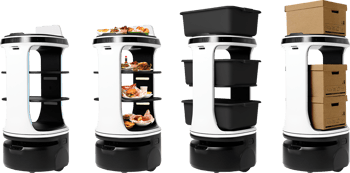The struggle to hire and retain hospitality workers is very real. Restaurant owners are dealing with labor challenges today that simply didn’t exist just a few years ago. On the bright side, we also have access to technology that didn’t exist just a few years ago.
While there’s no getting around today’s restaurant recruitment and retention challenges, an array of incredible tech-based solutions can help you manage these challenges. We wanted to find out exactly how restaurant operators can improve retention during a time of rising costs and persistent labor shortages, so we caught up with Tina Lum, CEO of Push Operations.
She tells us how a better restaurant recruitment strategy can improve retention. She also highlights the role that rapidly advancing technology can play in improving your recruitment outcomes.
Better Retention Rates Start With Better Hiring Practices
Push is a comprehensive, all-in-one labor management solution. Platforms like Push can handle everything from time tracking and payroll management to shift scheduling and on-boarding for new hires.
As CEO of Push Operations, Lum has seen firsthand the labor challenges that restaurants face today. She provides expert insight on these challenges and recommends some proven solutions.
3 Major Restaurant Recruitment and Retention Challenges
It’s competitive out there for employers. Lum explains that the labor landscape has transformed. She says that a combination of factors is making it harder for restaurants to attract and keep quality candidates.
1. The COVID Disruption
The hospitality industry is still dealing with the after-effects of the COVID crisis.
‘Talking to our clients,” says Lum, “COVID really changed the industry. People got out of the industry because everything shut down.”
Many job-seekers, she explains, are still focused on finding jobs outside of the food service industry, where opportunities are “a little bit more recession- and COVID-proof.”
2. The Changing Labor Landscape
Lum also points out that entry-level workers simply have a lot more options than they used to. She explains that “for somebody starting out early in their job, it used to be that a restaurant was the natural choice for employment. Now there are so many options with remote work, and that’s very attractive.”
As a hiring restaurant, you have to be prepared to offer competitive pay, benefits, and work–life balance — at a minimum. Otherwise, you risk losing candidates to jobs that offer more attractive employment packages.
3. A Generational Shift in Workplace Attitudes
Lum says that changing attitudes toward work may actually be the biggest recruitment and retention challenge for restaurants.
“The newer generation — the younger Gen Zs — have a really different mindset shift than other generations, where they're not just looking for a job that pays and where they can pay their dues.”
Younger workers are looking for the fastest track to advancement, promotion, and opportunity. That ambition can be the sign of strong future leadership for your business, but many young workers today expect opportunities for advancement to happen quickly. Restaurants are under a lot of pressure to offer employees good reasons to stay onboard.
7 Restaurant Recruitment and Retention Solutions That Work
The challenges listed above raise a lot of questions. How do we do a better job of attracting new workers to the restaurant business? How can we incentivize good employees to stick around? And what can the latest in restaurant technology do to help?
1. Automating Job Offers
For one thing, says Lum, your recruitment outcomes will depend on how quickly you move to lock down good candidates. Lum explains that “Time is a hot commodity.”
Job-seekers have more options than they used to. This means every wasted minute in the hiring process is an opportunity for a qualified candidate to accept an offer from somebody else. That’s why labor management platforms like Push place a premium on speed.


Subscribe to Our Monthly HR & Staffing Newsletter
Find solutions for hiring, scheduling, and retaining top talent in today's competitive market.
“Once you have a candidate,” Lum says, “you have to keep going and moving…so with Push, it’s about cutting out the manual process of communication. Our ATS [applicant tracking system] allows those automatic, one-click updates so you can send out an offer or schedule the next meeting to move the candidate along.”
2. Simplifying the On-Boarding Process
It’s just as important to provide a quick, efficient, and hassle-free on-boarding experience, says Lum. You have to “make it as easy as possible for employees to get through that process and start committing to it.”
On-boarding is the first experience employees will have with your operation. It should be a positive reflection of things to come. This, says Lum, means “having a structured, digitized on-boarding process” where candidates are “able to fill everything in and sign all the documentations.”
3. Using AI Tools For Better Matches
A new generation of tools is making it possible to sort through huge pools of candidates a whole lot faster. Lum explains that “you can have AI go through and cut back 400 applicants to a shorter pool.”
Of course, this type of tech can dramatically lower the amount of time you spend reviewing resumes. But you get more than just speed with the right AI tools. Lum says you can expect better results too.
“Using the right technology,” she says, you can get “a better match that is not just driven by human review. Putting in your requirements can really allow you to find and retain the right candidates.”
4. Taking the Emotion Out of Hiring
Traditional hiring methods are often subjective. We may not always realize it, but we sometimes tend to hire candidates on the basis of instinct and emotion. Lum suggests that this can get in the way of improving retention rates.
There are certain qualities that may be better at predicting a candidate’s job commitment. That’s why Lum recommends evaluating job candidates using a clear, objective scorecard.
Lum says some of Push’s clients have seen great results this way, using a scorecard to find candidates who meet specific goals and KPIs (key performance indicators).
“Now you're taking the emotion out of the process,” Lum says. Another benefit of this approach, Lum says, is that it can also be easily replicated and scaled. This can help a growing business or a multi-location restaurant chain streamline hiring practices based on proven outcomes.
5. Being Transparent About the Job
Job fit is a two-way street. A candidate must be a good fit for the job. But, says Lum, the job must also be a good fit for the candidate.
One of the most common reasons that workers quit their jobs, says Lum, is because the experience doesn't match initial expectations. This is why it’s so important to represent the job clearly to applicants. Lum says that it’s important to give job candidates a clear view of “the good, the bad, and the ugly.”
“Lay it all out,” she says. “That way, expectations are set. If they choose to come on board, they know exactly what they're getting themselves into.”
6. Building a Positive Workplace Culture
Restaurant workers have a lot of options. If you want to set your restaurant apart in a crowded job market, it starts with a positive internal culture. This is what keeps good employees around, says Lum. The restaurants that see the best recruitment and retention outcomes are those that succeed in creating a positive environment and promoting a good employee experience.
“I’d like to challenge anybody that thinks it's the money,” says Lum. She acknowledges that compensation is important, but says that culture ultimately plays a bigger part in retention.
“Is there a connection there? Is it fun for the employee to work there? Do they have a fun culture with great people, because at the end of the day, I think people that choose to join a restaurant are very people-oriented individuals. So it starts with the people they are working with.”
7. Focusing on Career Development
In addition to culture, Lum says, restaurants can set themselves apart by offering clear paths for career development. Lum advises that you really have to “set out to have career ladders and role progression. So you could start as a server, but now you can see how to move up — to become a team lead, to a general manager, to running your own store, and all the way through to different branches of working in the head office.”
Younger workers in particular are looking for concrete opportunities for growth. This is why, more than ever, says Lum, restaurant recruitment and retention both depend on your willingness to invest in the future of your employees.
“We strongly believe that people always want to grow,” Lum explains. “So the more you invest in them, the more they’ll invest in you.”
Why All-in-One Restaurant Recruitment and Retention Solutions Are Better
Lum offers a ton of insight on how to improve restaurant recruitment and retention. And as her insight shows, a lot goes into it. So how can you take all of this insight and make it part of your restaurant labor management strategy?
Consolidation is the key.
“I would highly suggest that if you're looking for a HRIS [human resources information system], not to just have an individual recruitment software and then another on-boarding software and another payroll software,” says Lum.
Instead, Lum recommends an all-in-one restaurant labor management platform, where you can streamline, automate, and integrate everything from recruitment and on-boarding to
payroll management, shift scheduling, and beyond.
To find out more, reach out for your personalized consultation today!





